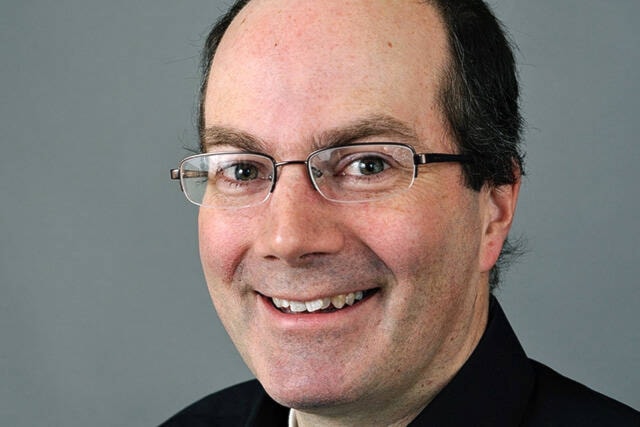Do you suffer from a vague guilty feeling that recycling your yogurt containers may not be enough to make up for your annual habit of burning 2,000 litres of home heating oil, pumping 2,000 litres of gas into your minivan and flaring off who knows how much jet fuel on your Hawaii vacation?
If you really want to know the truth, CarbonZero.ca can help you. According to their online calculator, using 2,000 litres of home heating fuel per year produces 5.5 tonnes of carbon emissions. Driving a 2016 Honda Odyssey minivan 20,000 kilometres, in a mix of downtown and highway driving, will burn 2,120 litres of gas. This pumps 4.8 tonnes of carbon dioxide into the air. And if you fly your carbon partner and two young consumers to Hawaii in economy, that’s 7.3 tonnes.
That’s a total of 17.6 tonnes of planet-warming greenhouse gas.
According to Our World in Data, that’s 350 times more than the average person in Burundi emits. And we haven’t got to your food, electricity or consumer goods yet.
Eventually you’ll emit less. By 2035, the sale of new fossil cars and light trucks will be banned. At some point, you’ll have to buck up to replace your oil furnace with a heat pump or similar gadget. I predict that Air North will eventually run hydrogen-fueled jetliners to Vancouver, once someone invents them.
But what to do in the meantime if you want to reduce your impact on our shared climate?
Some things you can start doing right away. Consume less. Bike to work if you can. Buy an electric car now, if you have the cash or credit rating. Depending on which one you buy and your driving habits, it may even be cheaper than owning a gas guzzler in the long run.
But what if you live far from work? Or live in an older home? Before switching to electric heat, you might need to reinsulate the walls, get new windows, pay Yukon Electric to upgrade your electrical service and hire someone to take away the old oil tank. That could easily eat up half the annual pre-tax salary for the average Yukoner.
Fortunately, there are ways to offset your carbon emissions. Suppose your old furnace emitted 5.5 tonnes of carbon. Then, while you saved up for the furnace project, you paid someone to remove 5.5 tonnes of carbon out of the sky and store it permanently somewhere. These are called “removal” credits. It would be as if you had a zero-emission furnace.
You can also pay people to avoid doing things that emit carbon, like promising not to cut down a forest for at least 100 years. These are called “avoidance” credits.
There is a vigorous debate out there about how much we should rely on such offset credits. Some think they let emitters off the hook. Others think they are a useful way to neutralize emissions while we get organized to cut emissions more dramatically. The Climate Trust says that “both project types are essential to begin to achieve a neutral carbon balance.”
CarbonZero.ca lets you buy credits to offset your carbon emissions. You can choose a range of projects certified by reputable standards agencies. For example, for $28 per tonne, you could pay some Canadian school boards to invest to improve energy efficiency and burn less natural gas.
For $30 per tonne, you could pay the Coastal First Nations on Haida Gwaii and the B.C. mainland to convert part of the Great Bear Forest to protected status. The trees will not be cut, and will continue to grow and absorb carbon. The project says it is the “first carbon offset project in North America to be implemented on traditional territory with unextinguished Aboriginal rights and Title.”
For $25 per tonne, the Nanaimo Landfill Gas Capture Project will take methane that would have caused climate change and either burn it or use it to make electricity. The system provides power to around 1,200 homes.
In Alaska, KTOO Public Television in Juneau reports that Sealaska, Southeast Alaska’s regional Native corporation, is doing something similar to B.C.’s Coastal First Nations. Sealaska manages 360,000 acres of forest in the Alaska panhandle and is selling offset credits into the California market. This will bring in “multiple millions” of dollars, a Sealaska executive told KTOO.
Innovators elsewhere are also working on high-tech projects that capture carbon dioxide directly from the air, or from the smokestacks of biomass power plants, and store it permanently underground.
If a family emitting 17.6 tonnes, like the one above, bought Great Bear Forest credits it would cost $528. That’s too much for many Yukon families. But for others, it’s less than a new iPhone.
Interestingly, this money does more than just offset carbon emissions. It also creates jobs in Juneau, Nanaimo, Massett and Prince Rupert.
Unlike B.C. and Alaska, we don’t have much of a forestry industry. But we do have landfills with compost facilities and schools doing energy efficiency projects. It’s also possible that, in the longer run, we might build a big biomass power plant near good storage geology.
So why aren’t any Yukon projects on CarbonZero.ca’s menu?
I don’t know. But maybe the Whitehorse landfill or First Nations School Board should give them a call.
Keith Halliday is a Yukon economist, author of the Aurore of the Yukon youth adventure novels and co-host of the Klondike Gold Rush History podcast. He is a Ma Murray award-winner for best columnist.
